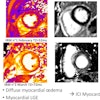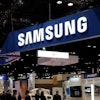
Prizewinning French researchers are reporting success with their own system that provides real-time visual feedback about radiation exposure and the 3D propagation of scattered radiation using augmented reality (AR). The system can increase dose awareness, reduce overexposure risks, and has an error rate of less than 20%, they said at ECR 2018 in Vienna.
 Nicolas Loy Rodas, PhD.
Nicolas Loy Rodas, PhD.What's more, clinicians can adapt their positioning and the disposition of protective equipment with the visual feedback provided by the system. Preoperatively, it has the potential to be used as a tool to teach staff about ionizing radiation diffusion effects and the best safety practices, according to lead presenter Nicolas Loy Rodas, PhD, a research engineer at the Institute of Image-Guided Surgery at the University of Strasbourg (IHU Strasbourg).
Loy Rodas and his colleagues have demonstrated a prototype of their XAware-Live system in an experimental interventional room at IHU Strasbourg that contains a robotic x-ray imaging device. The system relies on multiple registered RGB-D cameras mounted on the ceiling of the room, along with radiation simulation and visualization, for providing real-time visual feedback about dose. Interventional radiologists like the system because it provides a clear in situ visualization of radiation, and it is ideal for teaching about radiation's diffusion effects, they noted in an e-poster that received a cum laude award at ECR 2018.
Risks to patients and staff
Studies have documented the dosage of ionizing radiation among interventional practitioners as the highest registered for any medical staff working with x-rays, the authors explained. Most interventions are performed under fluoroscopy guidance (continuous x-ray imaging) and staff are obliged to remain close to the patient during the procedure.
"Any amount of exposure increases the risk of radiation-induced tissue reactions (epilation, skin necrosis, cataracts, etc.) and of stochastic effects such as cancers," they wrote. "While a patient's exposure can be justified by medical indication and usually occurs in a single episode, medical staff providing patient care can be exposed daily. The repetitive nature of this exposure, even to low dose, increases the risk of developing negative biological effects, and such a risk increases with the dose accumulated over time."
The Strasbourg team was concerned that no method exists to intraoperatively monitor the 3D propagation and magnitude of scattered radiation fields, so they developed their prototype. Direct communication with the application programming interface (API) of the angiographic C-arm (Artis Zeego, Siemens Healthineers) gives the system access to the device's current kinematic parameters. These are applied to display radiation safety information corresponding to the actual C-arm configuration and imaging protocol.
Its graphical user interface (GUI) is divided into two main parts. The left part shows the live feed from the ceiling-mounted cameras, and the right one shows a virtual representation of the operating room (OR) layout. The imaging device's kinematic parameters are applied to update the status of the displayed virtual C-arm model and also to display radiation safety information corresponding to the actual C-arm configuration. Typically, the GUI is shown on a surgical screen inside the OR so the user can interact with it and choose among the different visualization modes through the icons located on its lower part.
 By combining graphics processing unit (GPU)-accelerated Monte Carlo simulations with color-coded augmented reality visualizations, the global radiation awareness system makes visible the propagation and intensity of scattered radiation for the current C-arm configuration and imaging parameters. Such a system has the potential to be used to teach intuitively about radiation's diffusion effects and about the best radiation safety practices through in situ visual feedback of radiation exposure. All images courtesy of Nicolas Loy Rodas, PhD, "Context-Aware Radiation Protection for the Hybrid Operating Room," PhD Dissertation, University of Strasbourg, 2018.
By combining graphics processing unit (GPU)-accelerated Monte Carlo simulations with color-coded augmented reality visualizations, the global radiation awareness system makes visible the propagation and intensity of scattered radiation for the current C-arm configuration and imaging parameters. Such a system has the potential to be used to teach intuitively about radiation's diffusion effects and about the best radiation safety practices through in situ visual feedback of radiation exposure. All images courtesy of Nicolas Loy Rodas, PhD, "Context-Aware Radiation Protection for the Hybrid Operating Room," PhD Dissertation, University of Strasbourg, 2018."We have proposed a radiation simulation approach taking the current room layout into account to compute in real-time the patient and staff dose, along with the 3D propagation of scattered radiation. It applies Monte Carlo methods to compute the propagation of x-rays and the deposited dose for a given imaging protocol and room layout," the authors stated.
Their radiation simulation approach exploits the computing capabilities of graphics processing units to achieve quasi-real-time performance in the simulation of the 3D propagation of scattered radiation and patient dose, they added.
The radiation maps are precomputed for different sets of imaging parameters and angulations, and they are loaded onto the initialization of the system. They are computed for several standard x-ray particles' energy spectrums (simulated from x-ray tube voltage and filtration values) for every five projections in a full C-arm rotation. The C-arm angulation is obtained directly from its API, and the corresponding radiation map to display is loaded. Only kinematic information is provided by the current API's version, so the user selects through the GUI the x-ray imaging parameters to visualize, according to the researchers.
"The system can make ionizing radiation visible through different visualization modes. These visualizations rely on the multicamera setup and tracking/registration methods, along with the radiation simulation approaches," they pointed out. "AR gives a user the capability to visualize the current patient/staff dose and the 3D distribution and intensity of scattered radiation."
 Ceiling-mounted RGB-D cameras are used to perceive the current operating room environment and extract information such as the current pose of the clinicians in the scene. Such information is then exploited by Monte Carlo simulations for providing visual feedback about radiation exposure consistent to the current room layout, such as the current body part radiation exposure of clinical staff.
Ceiling-mounted RGB-D cameras are used to perceive the current operating room environment and extract information such as the current pose of the clinicians in the scene. Such information is then exploited by Monte Carlo simulations for providing visual feedback about radiation exposure consistent to the current room layout, such as the current body part radiation exposure of clinical staff.Visualization in a virtual world
Relevant information related to the current radiation propagation is shown in a virtual environment, enabling the system to be applied in rooms without ceiling-mounted cameras if access to the imaging device's API is available. The 3D dose deposition over the patient's organs and skin is shown in an additional virtual visualization window, and the user can access the visualization through the system's GUI and the displayed patient exposure map is updated according to current imaging projection and protocol, the authors continued.
 Visualization of the simulated dose to the skin and the organs of a patient model, updated according to the current C-arm angulation and imaging parameters, as shown by the system's GUI.
Visualization of the simulated dose to the skin and the organs of a patient model, updated according to the current C-arm angulation and imaging parameters, as shown by the system's GUI."Initial feedback has been positive," they wrote. "The potential of the system as a tool to teach about radiation's diffusion effects has also been acknowledged. Visual feedback about radiation exposure can render more intuitive the current training sessions, as these are based on students gathering and comparing measurements from dosimeters for different room layouts and C-arm configurations."
The team has performed a set of dose measurements using the Artis Zeego device and a set of RaySafe wireless active personal dosimeters to evaluate the radiation simulation approach. A plexiglass phantom of 20 x 20 x 24 cm, with 10-mm-thick plexiglass walls and filled with water, was irradiated under different imaging protocols. Eight dosimeters were either placed over the operating table or taped to drip rods and placed around the work area.
The researchers used different imaging protocols with the same tube tension and filtration values (100 kVp and 0.4 mm Al, respectively) while varying the C-arm projection angles in the two rotation planes. They computed the relative errors between the simulated dose values and the ones measured by the validation dosimeters to verify the accuracy of the simulated dose distribution, based on 15 different C-arm configurations.
The team performed a simulation with 108 particles (uncertainty below 2%) for each of them. The energy values deposited at the dosimeters' positions could be simulated in approximately 30 seconds with their approach. The mean error obtained for all experiments was 18.7%, which the group considers to be acceptable.
Overall impact
Better awareness of ionizing radiation and reduced exposure can lead to greater acceptance of minimally invasive procedures and hybrid rooms that heavily depend upon the use of x-ray imaging technologies, and they are planned to be routinely utilized by clinicians from a variety of disciplines, the researchers concluded. Consequently, improving radiation safety can facilitate a greater and a safer access to x-ray-guided minimally invasive procedures.
The researchers disclosed their work was supported by the French National Research Agency (ANR) within the Investissements d'Avenir program under references ANR-11-LABX-0004 (Labex CAMI), ANR-10-IDEX-0002-02 (IdEx Unistra), ANR-10-IAHU-02 (IHU Strasbourg), and ANR-11- INBS-0006 (FLI).
To view the Strasbourg group's full e-poster from ECR 2018, click here.
A video demonstrating the system also is available below:


















